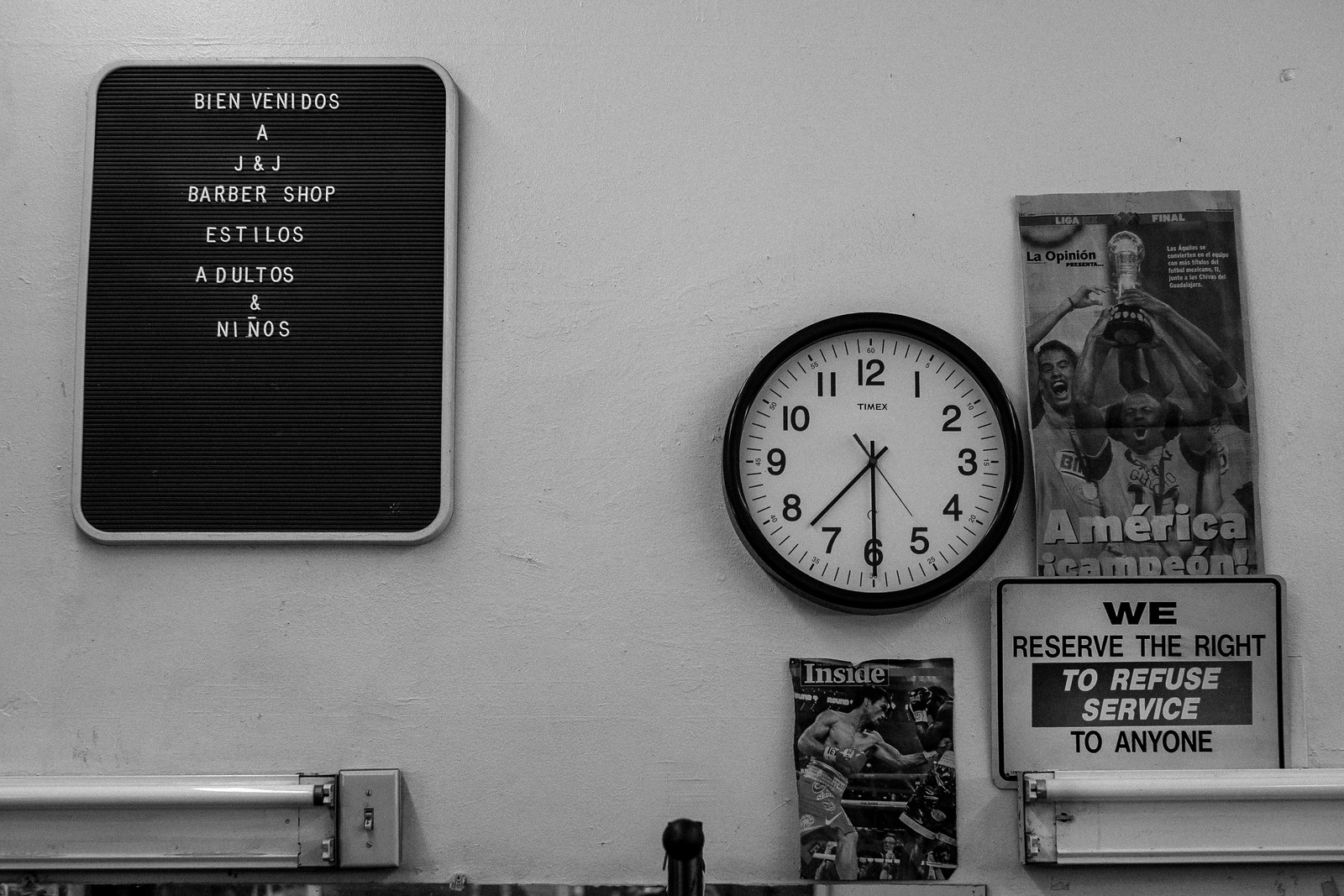


Welcome. Los Angeles, Ca.: photo by michaelj1998, 10 January 2017
Jorge Luis Borges: Un problema
Imaginemos
que en Toledo se descubre un papel con un texto arábigo y que los
paleógrafos lo declaran de puño y letra de aquel Cide Hamete Benengeli
de quien Cervantes derivó el Don Quijote. En el texto leemos que el
héroe (que, como es fama, recorría los caminos de España, armado de
espada y de lanza, y desafiaba por cualquier motivo a cualquiera)
descubre, al cabo de uno de sus muchos combates, que ha dado muerte a un
hombre. En este punto cesa el fragmento; el problema es adivinar, o
conjeturar, cómo reacciona Don Quijote.
Que yo sepa, hay tres contestaciones posibles. La primera es de índole negativa; nada especial ocurre, porque en el mundo alucinatorio de Don Quijote la muerte no es menos común que la magia y haber matado a un hombre no tiene por qué perturbar a quien se bate, o cree batirse, con endriagos y encantadores. La segunda es patética. Don Quijote no logró jamás olvidar que era una proyección de Alonso Quijano, lector de historias fabulosas; ver la muerte, comprender que un sueño lo ha llevado a la culpa de Caín, lo despierta de su consentida locura acaso para siempre. La tercera es quizá la más verosímil. Muerto aquel hombre, Don Quijote no puede admitir que el acto tremendo es obra de un delirio; la realidad del efecto le hace presuponer una pareja realidad de la causa y Don Quijote no saldrá nunca de su locura.
Queda otra conjetura, que es ajena al orbe español y aun al orbe del Occidente y requiere un ámbito más antiguo, más complejo y más fatigado. Don Quijote -- que ya no es Don Quijote sino un rey de los ciclos del Indostán -- intuye ante el cadáver del enemigo que matar y engendrar son actos divinos o mágicos que notoriamente trascienden la condición humana. Sabe que el muerto es ilusorio como lo son la espada sangrienta que le pesa en la mano y él mismo y toda su vida pretérita y los vastos dioses y el universo.
Que yo sepa, hay tres contestaciones posibles. La primera es de índole negativa; nada especial ocurre, porque en el mundo alucinatorio de Don Quijote la muerte no es menos común que la magia y haber matado a un hombre no tiene por qué perturbar a quien se bate, o cree batirse, con endriagos y encantadores. La segunda es patética. Don Quijote no logró jamás olvidar que era una proyección de Alonso Quijano, lector de historias fabulosas; ver la muerte, comprender que un sueño lo ha llevado a la culpa de Caín, lo despierta de su consentida locura acaso para siempre. La tercera es quizá la más verosímil. Muerto aquel hombre, Don Quijote no puede admitir que el acto tremendo es obra de un delirio; la realidad del efecto le hace presuponer una pareja realidad de la causa y Don Quijote no saldrá nunca de su locura.
Queda otra conjetura, que es ajena al orbe español y aun al orbe del Occidente y requiere un ámbito más antiguo, más complejo y más fatigado. Don Quijote -- que ya no es Don Quijote sino un rey de los ciclos del Indostán -- intuye ante el cadáver del enemigo que matar y engendrar son actos divinos o mágicos que notoriamente trascienden la condición humana. Sabe que el muerto es ilusorio como lo son la espada sangrienta que le pesa en la mano y él mismo y toda su vida pretérita y los vastos dioses y el universo.
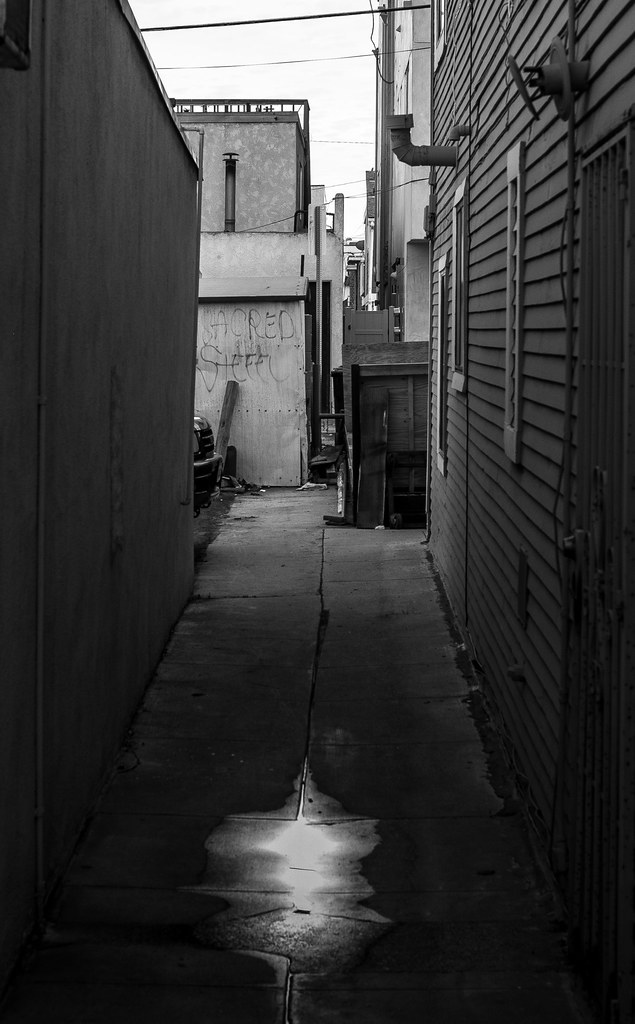
Point the way. Sunset Beach, Ca.: photo by michaelj1998, 8 January 2017
A Problem
Let us imagine that in Toledo someone finds a paper with an Arabic text and that the paleographers declare the handwriting belongs to that same Cide Hamete Benengeli from whom Cervantes took his Don Quixote. In the text we read that the hero -- who, as the story goes, rambled about Spain armed with a sword and lance, challenging all sorts of people for all sorts of reasons -- discovers at the end of one of his many frays that he has killed a man. At this point the fragment breaks off. The problem is to guess, or to conjecture, how Don Quixote reacts.As I see it, there are three possible solutions. The first is negative. Nothing special happens, for in the hallucinatory world of Don Quixote death is no less common than magic, and to have killed a man need not perturb someone who struggles, or thinks he struggles, with monsters and enchanters. The second is pathetic. Don Quixote never managed to forget that he was a projection of Alonso Quijano, a reader of fairy tales. Seeing death, realizing that a dream has led him to commit the sin of Cain, wakes him from his pampered madness, possibly forever. The third is perhaps the most plausible. Having killed a man, Don Quixote cannot admit that his terrible act is the fruit of a delirium. The reality of the effect forces him to presuppose a parallel reality of the cause, and Don Quixote will never emerge from his madness.
There remains another conjecture, alien to the Spanish world and even to the Occidental world. It requires a much more ancient setting, more complex, and wearier. Don Quixote, who is no longer Don Quixote but rather a king of the Hindustani cycles, intuitively knows as he stands before his enemy’s cadaver that to kill and to beget are divine or magical acts which manifestly transcend humanity. He knows that the dead man is an illusion, as is the bloody sword that weighs down his hand, as is he himself, and all his past life, and the vast gods, and the universe.
Jorge Luis Borges (1899-1986): Un problema / A Problem, from El hacedor, 1960; English version by Mildred Boyer


Chill'n. Boyle Heights.: photo by michaelj1998, 10 January 2017

Chill'n. Boyle Heights.: photo by michaelj1998, 10 January 2017
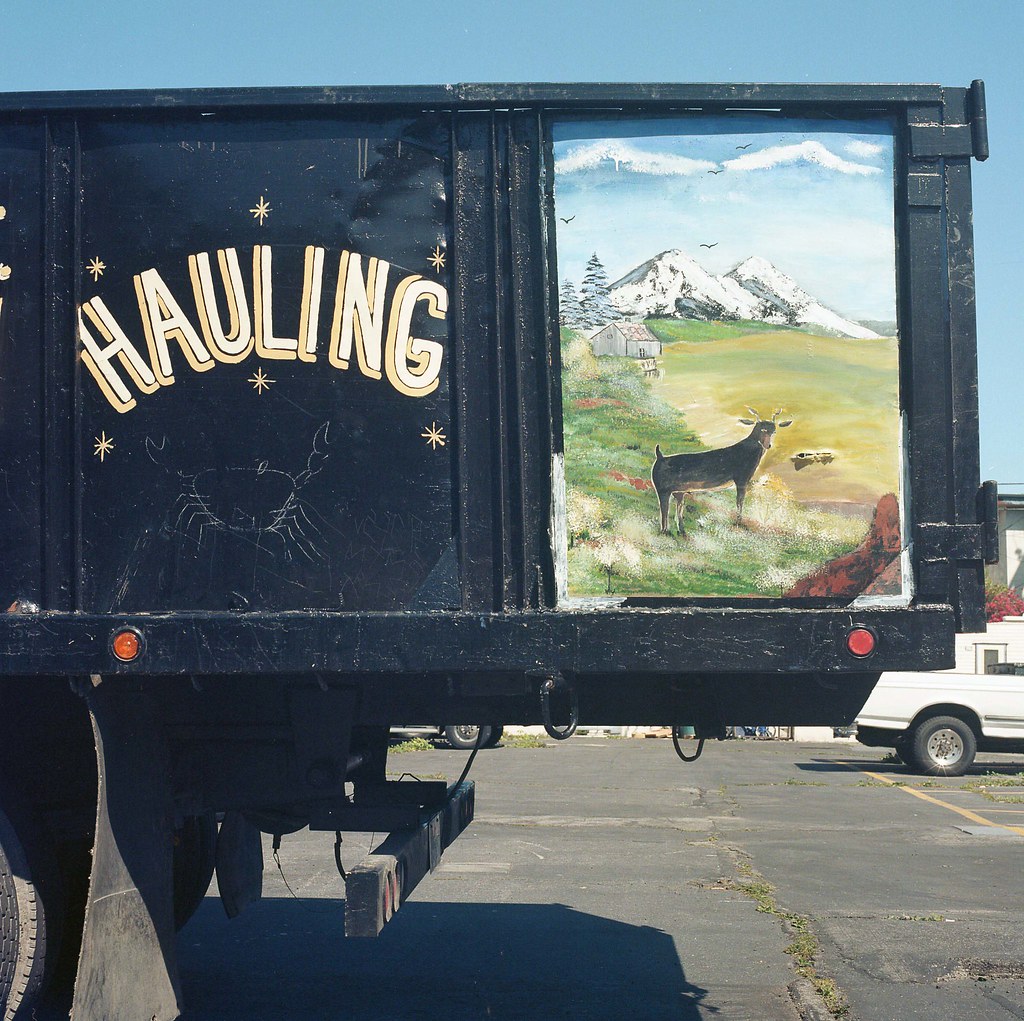
Hauling mural (LA): photo by Andrew Murr, 15 January 2017
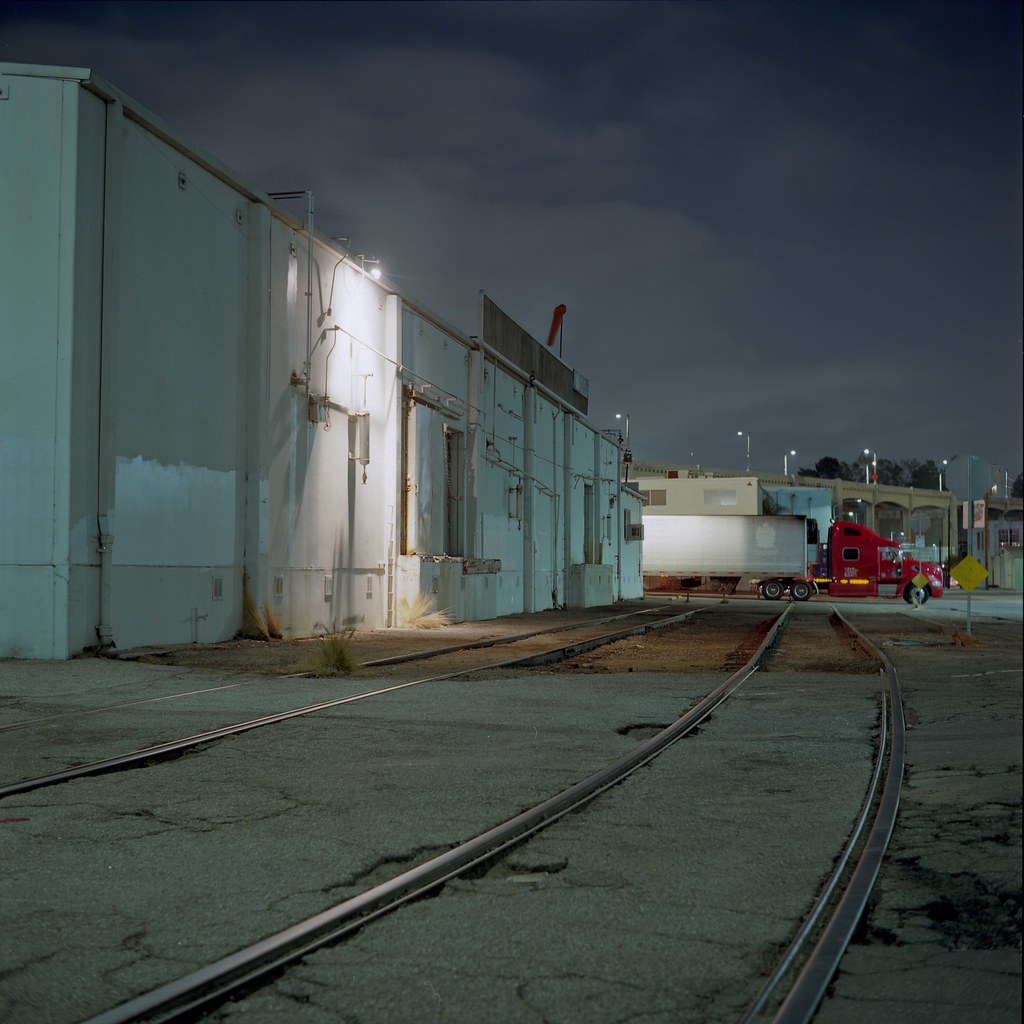
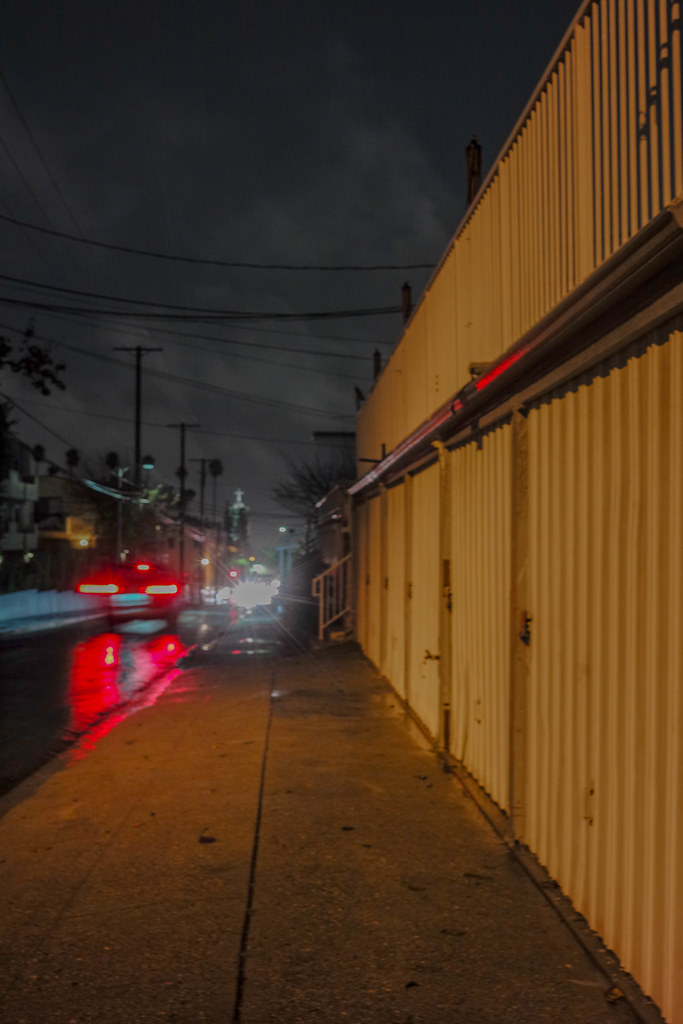
Rain on Gower (LA): photo by Andrew Murr, 10 January 2017
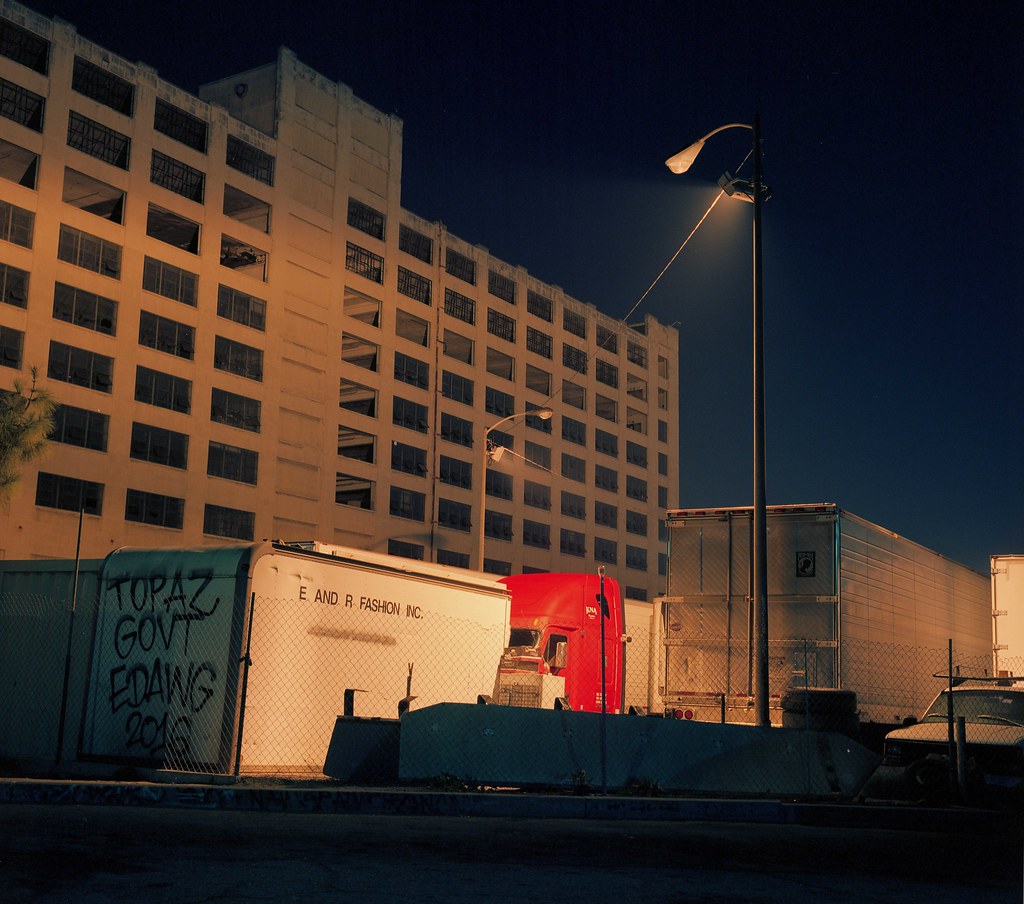
Night light (LA): photo by Andrew Murr, 9 January 2017
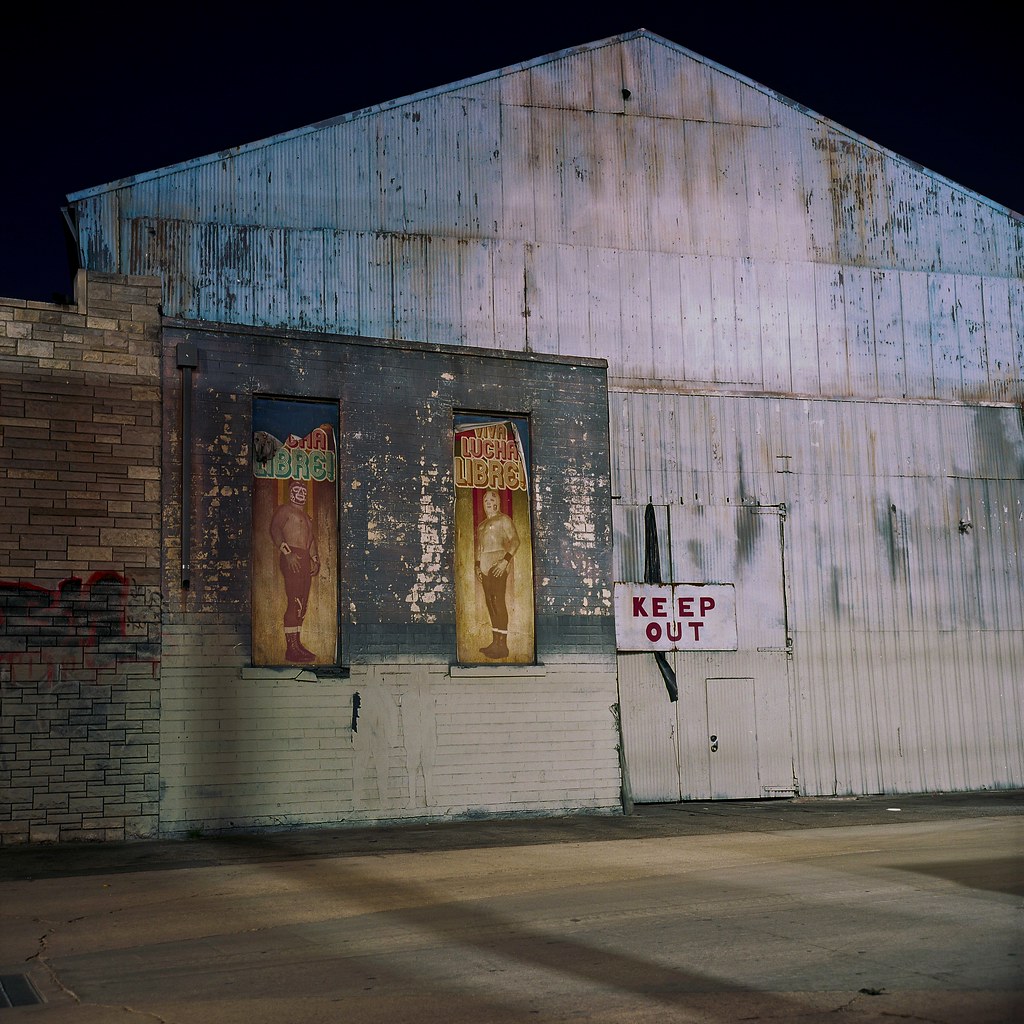
Trump world (LA): photo by Andrew Murr, 8 October 2016
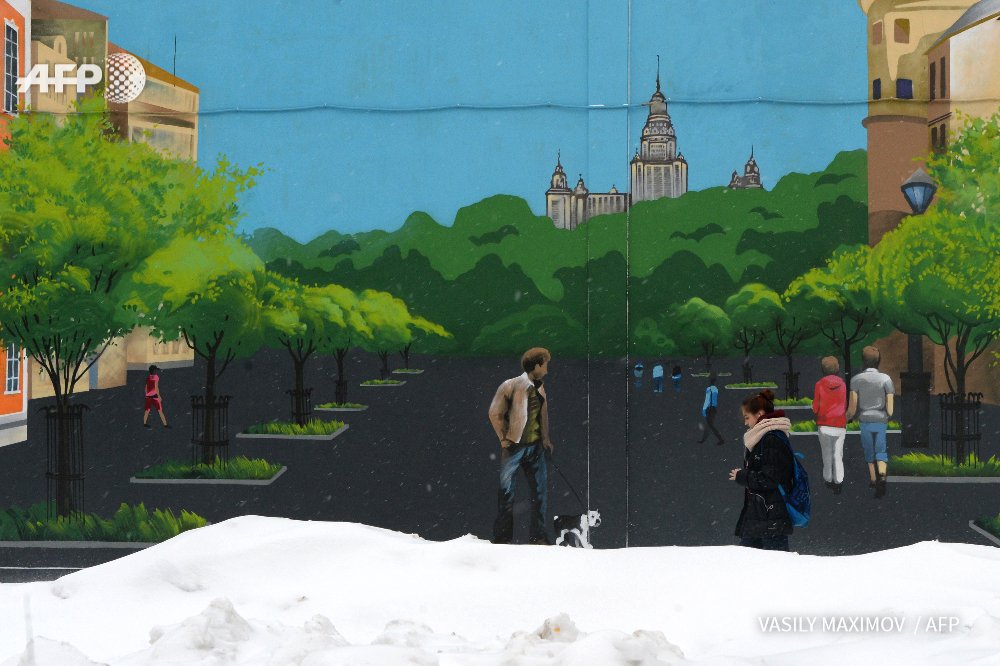
RUSSIA - A woman walks past a wall decorated with a giant painting in Moscow. By @vasilymaximov #AFP: image via AFP Photo Department @AFPphoto, 15 January 2017
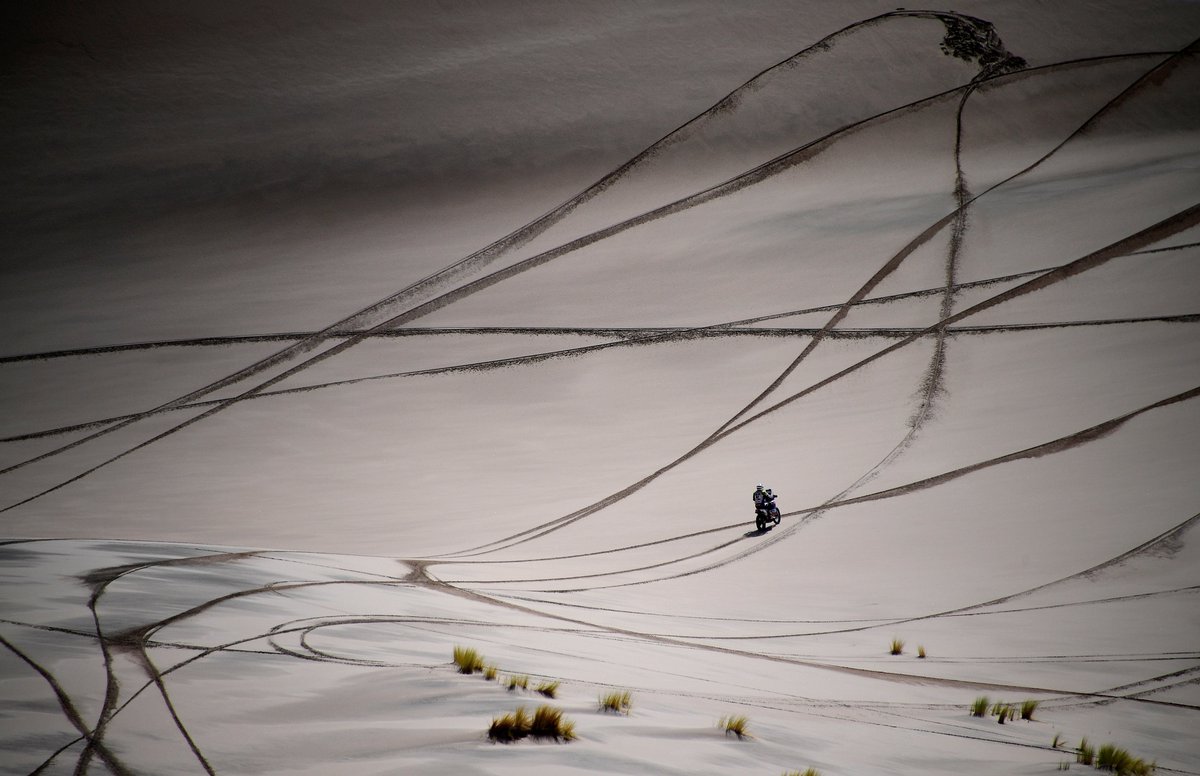
Emilie Poucan award for the best pic #Dakar2017 @franck_fife (AFP). / El premio Emilie Poucan mejor foto #Dakar2017 Franck Fife (AFP): image via DAKAR RALLY @dakar, 14 January 2017

ARGENTINA - People bathe in a pool during a hot day in Buenos Aires. By @FranckFife #AFP: image via Frédérique Geffard @fgeffardAFP, 15 January 2017
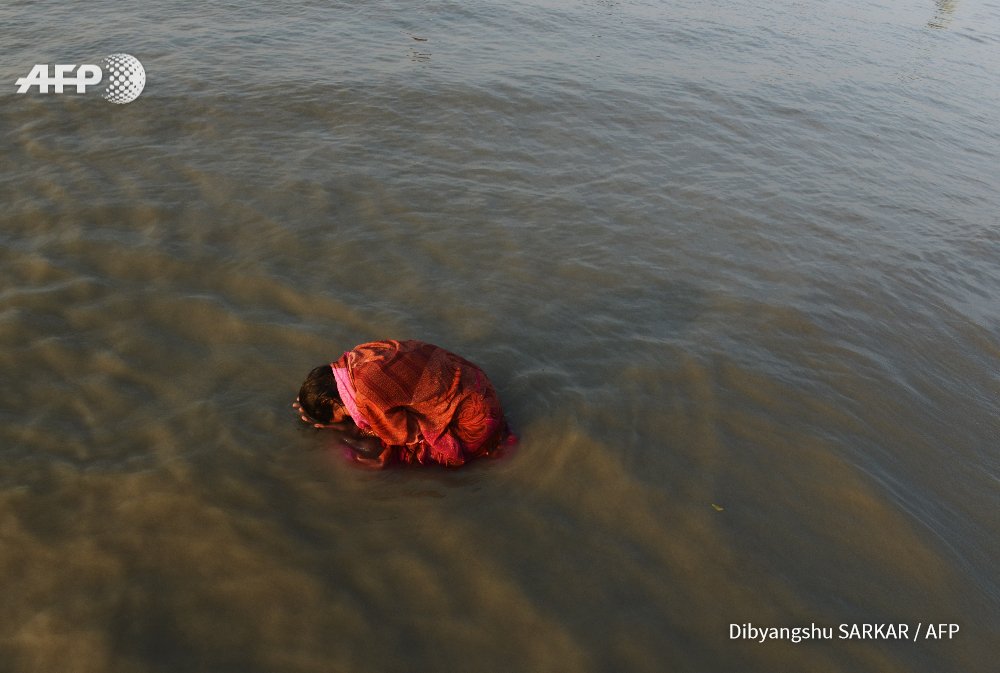
INDIA - Hindu devotees take a holy bath and perform rituals at the Gangasagar Island. By @Dibyangshus #GangasagarMela: image via Frédérique Geffard @fgeffardAFP, 15 January 2017
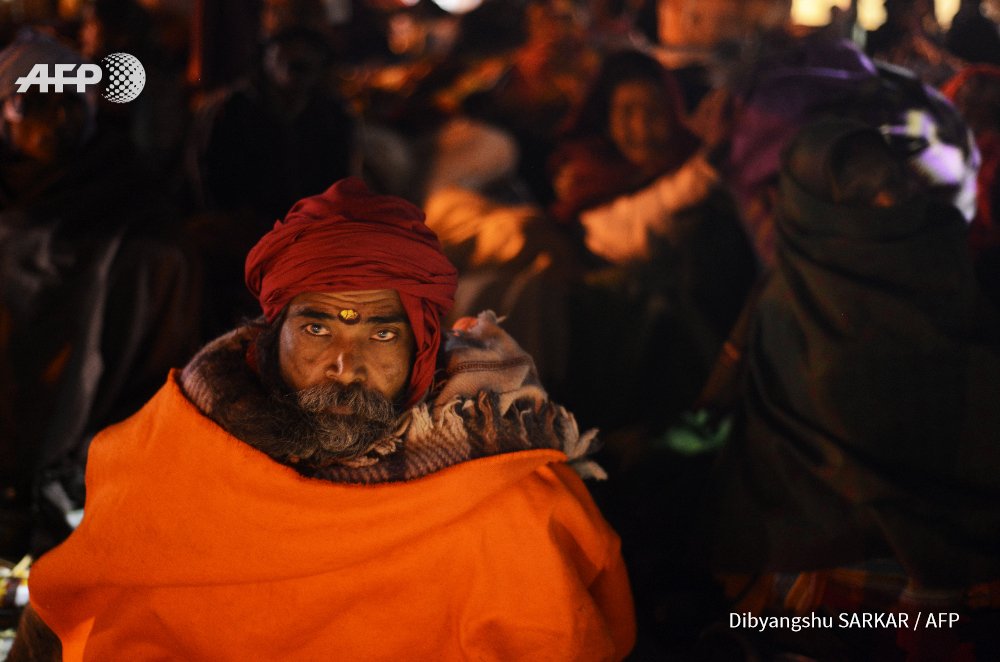
INDIA - A sadhu along with other devotees waits for dawn to take a holy bath at the Gangasagar Island. By @Dibyangshus #GangasagarMela #AFP: image via Frédérique Geffard @fgeffardAFP, 15 January 2017

INDIA - Hindu devotees take a holy bath and perform rituals at the Gangasagar Island. By @Dibyangshus #GangasagarMela: image via Frédérique Geffard @fgeffardAFP, 15 January 2017
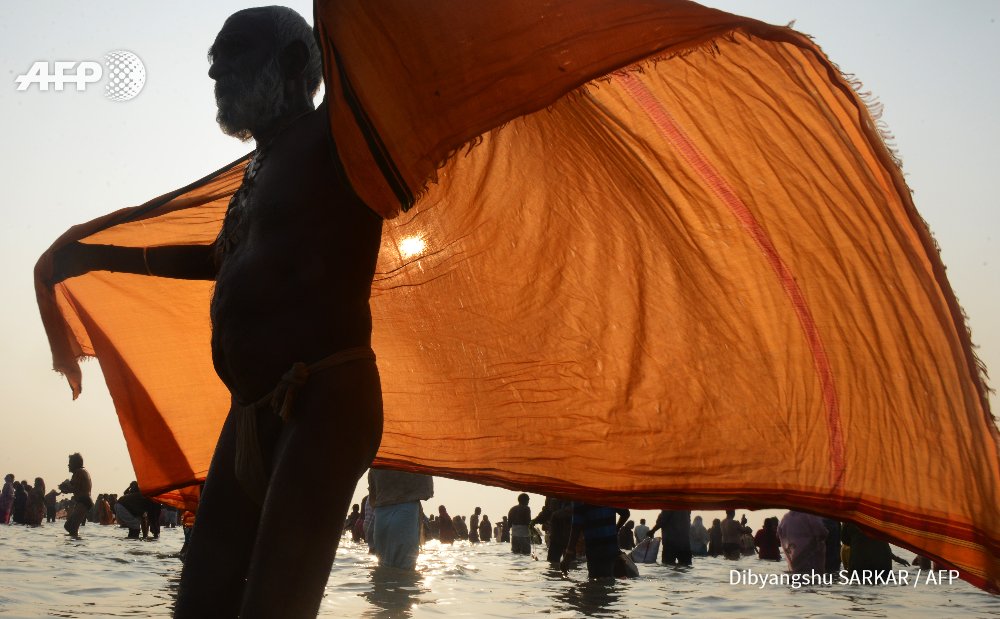
INDIA - A sadhu walks back after taking a holy bath in the Bay of Bengal at the mouth of the river Ganges on Sagar Island. By @Dibyangshus : image via Frédérique Geffard @fgeffardAFP, 15 January 2017

INDIA - Hindu devotees dry their saris after taking a holy bath and performing rituals at Gangasagar Island. By @Dibyangshus #GangasagarMela: image via Frédérique Geffard @fgeffardAFP, 15 January 2017
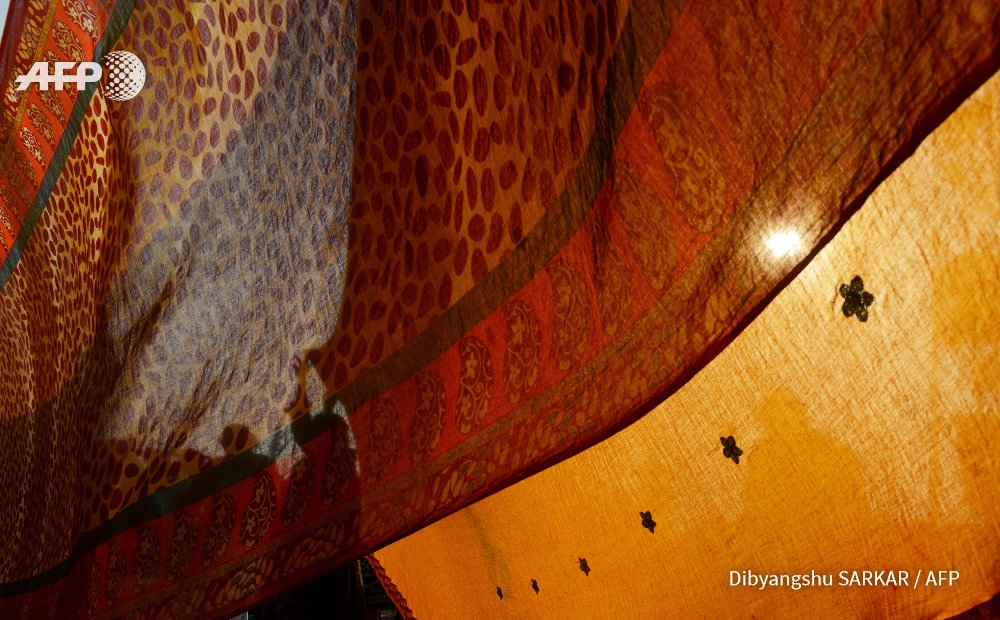
INDIA - Hindu devotees dry their saris after taking a holy bath and performing rituals at Gangasagar Island. By @Dibyangshus #GangasagarMela: image via Frédérique Geffard @fgeffardAFP, 15 January 2017

PHILIPPINES - Residents carry religious icons of the baby Jesus during the annual Sto Nino (baby Jesus) feast in Manila. By @herime23: image via Frédérique Geffard @fgeffardAFP, 15 January 2017
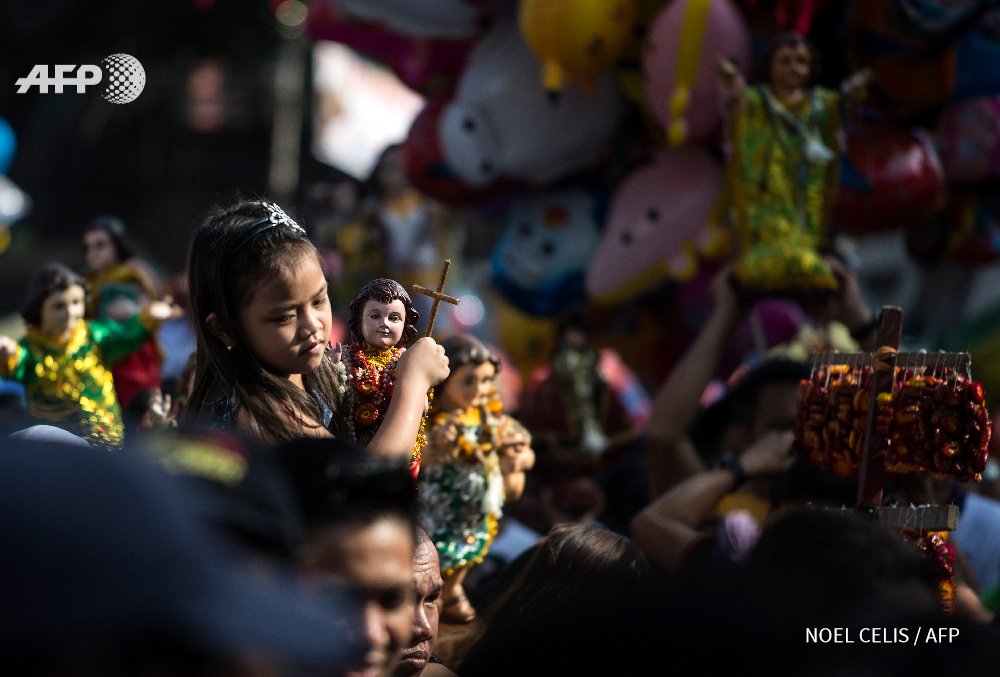
PHILIPPINES - A girl carries a religious icon of the baby Jesus during the annual Sto Nino feast in Manila. By @herime23 #AFP: image via Frédérique Geffard @fgeffardAFP, 15 January 2017
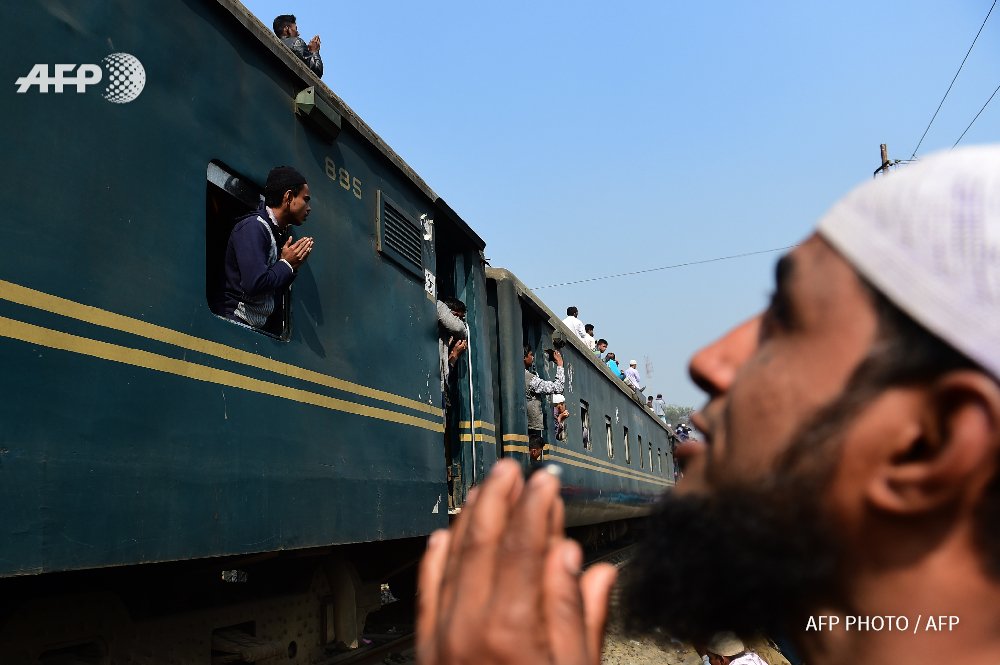
BANGLADESH - Muslim devotees take part in Akheri Munajat, at the Biswa Ijtema or World Muslim Congregation, at Tongi. By @AFPphoto #AFP: image via Frédérique Geffard @fgeffardAFP, 15 January 2017
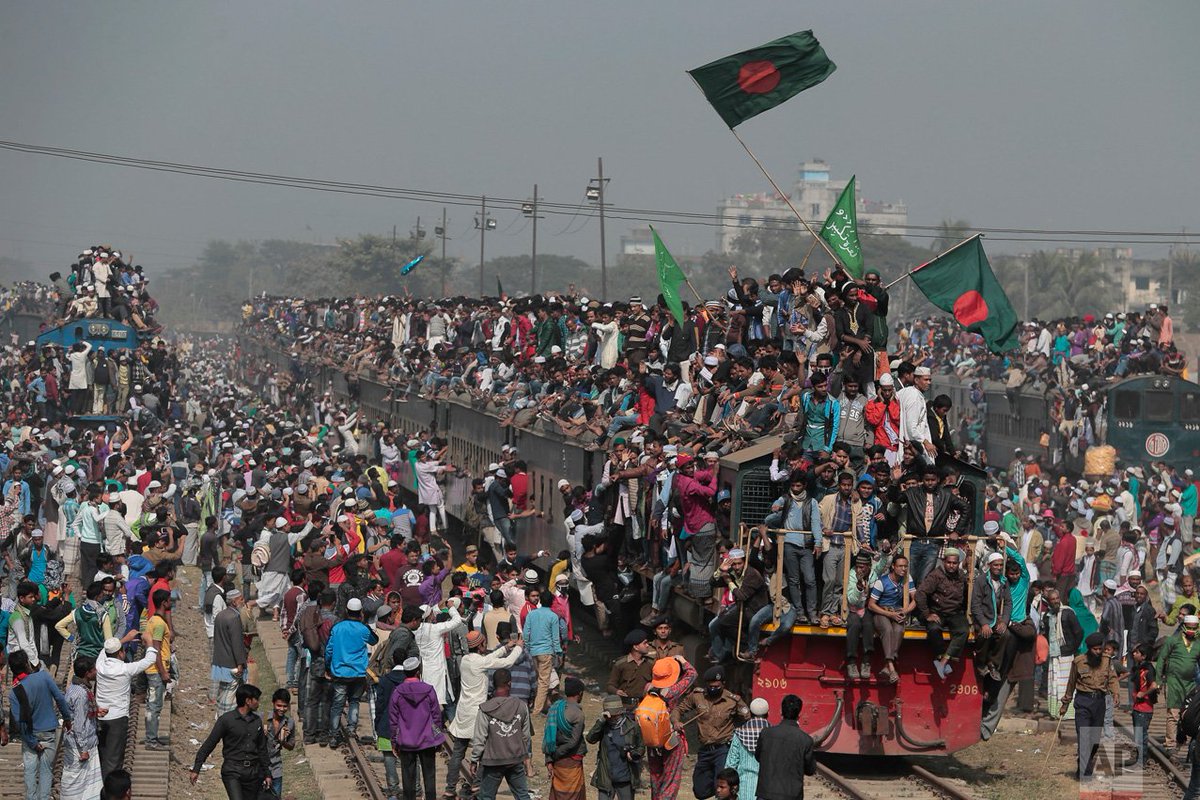
Bangladeshi Muslim devotees head to their homes in an over-crowded train after attending the final day of a three-day Islamic congregation on the banks of the River Turag in Tongi, about 20 kilometers (13 miles) north of the capital Dhaka, Bangladesh, Sunday, Jan. 15, 2017. Since the 1960s, devotees have been participating in the annual event, which is one of the world's largest congregations of Muslims, the second phase of which is scheduled to begin Friday.: photo by AP / image via AP Images @AP_Images, 15 January 2017
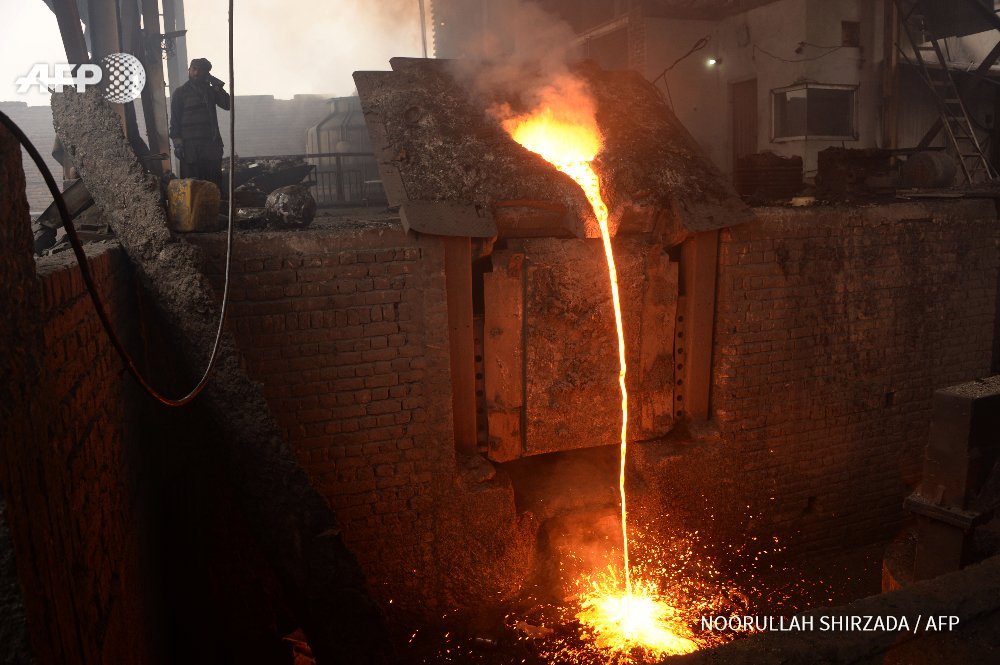
AFGHANISTAN - Afghan labourers burn garbage at a factory that produces steel on the outskirts of Jalalabad. By @Noorullah700 #AFP: image via Frédérique Geffard @fgeffardAFP, 15 January 2017

PAKISTAN - A Pakistani man carries firewood along street in Rawalpindi. By @farooqnaeem1 #AFP: image via Frédérique Geffard @fgeffardAFP, 15 January 2017
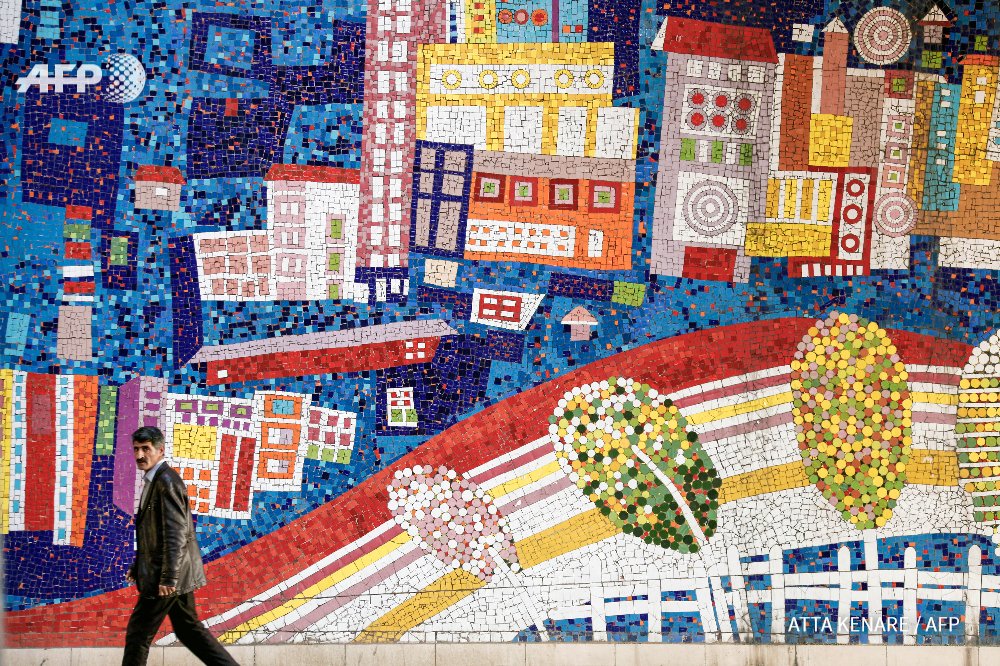

IRAN - A man walks along a street past a mosaic mural on the first anniversary of the nuclear agreement in Tehran. By Atta Kenare #AFP: image via Frédérique Geffard @fgeffardAFP, 15 January 2017

SKOREA - View of mobile phones and computer keyboards displayed at the Metropolitan Electronics Recycling Center in Yongin. By @edwardesjones: image via Frédérique Geffard @fgeffardAFP, 15 January 2017
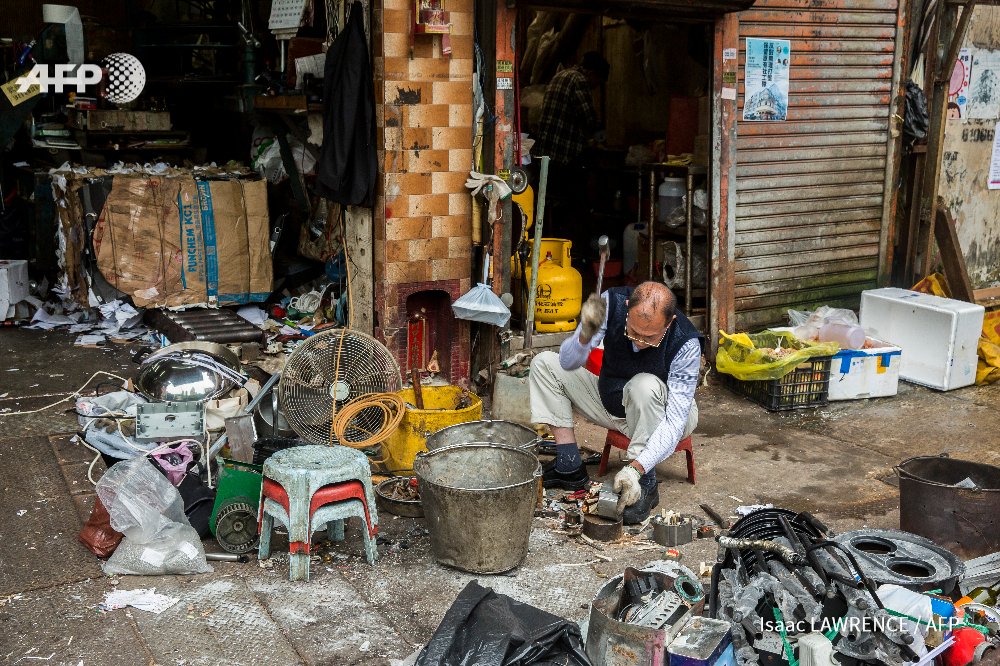
CHINA - A worker takes apart electronic components at a government-approved recycling shop in Hong Kong. By Isaac Lawrence #AFP: image via Frédérique Geffard @fgeffardAFP, 15 January 2017
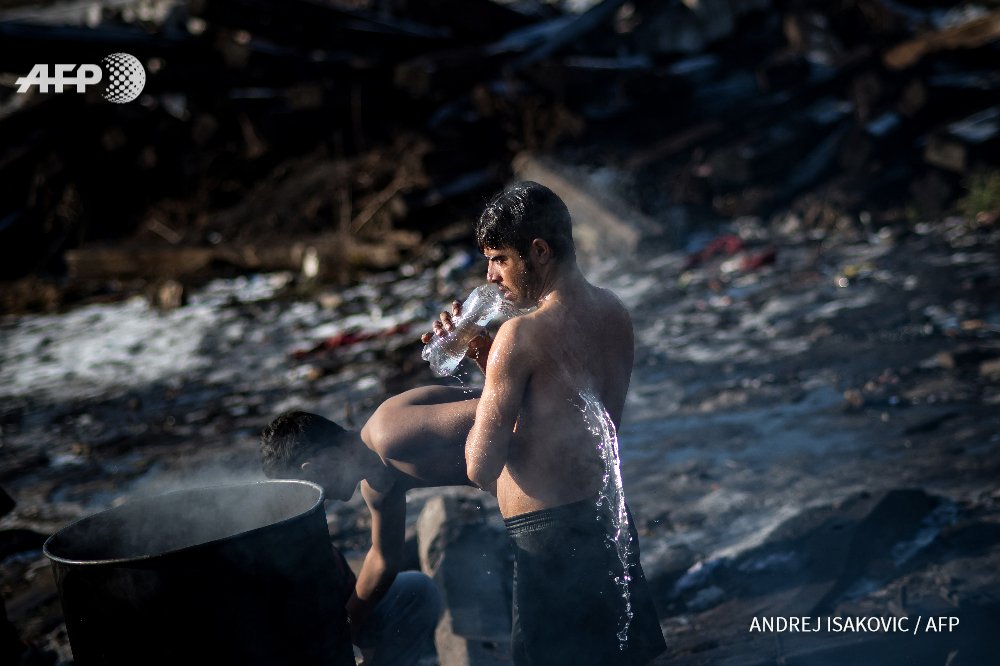
SERBIA - Migrants wash themselves outside derelict warehouses which they use as a makeshift shelter in Belgrade. By @iandrej #AFP: image via Frédérique Geffard @fgeffardAFP, 15 January 2017
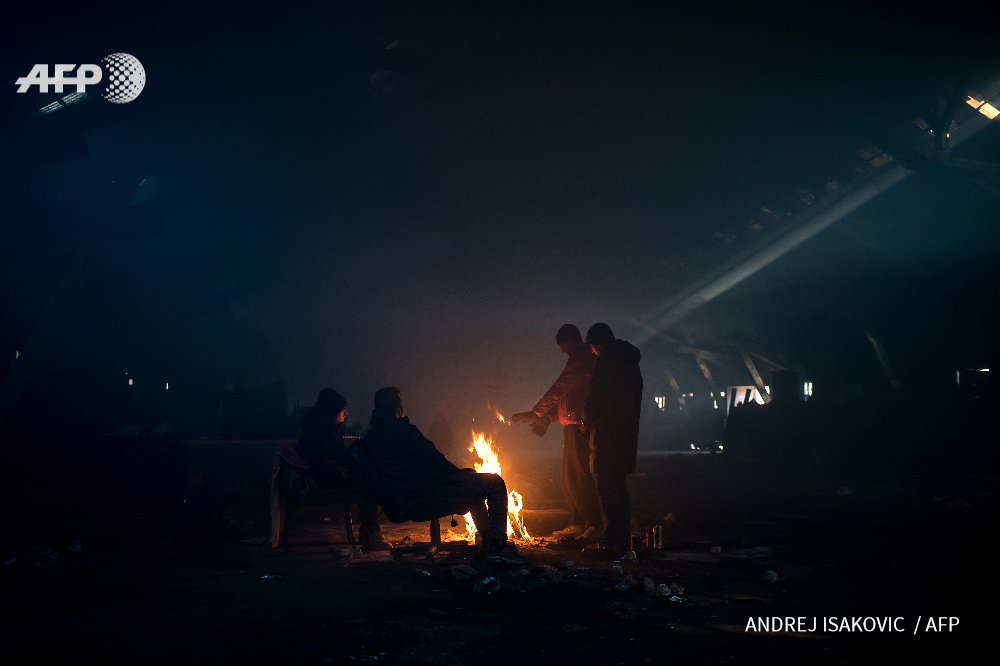
SERBIA - Migrants warm up around a fire inside a derelict warehouse used as a makeshift shelter in Belgrade. By @iandrej #AFP: image via Frédérique Geffard @fgeffardAFP, 15 January 2017

SERBIA - Migrants eat hot meals received from volunteers, outside derelict warehouses in Belgrade. By @iandrej #AFP: image via Frédérique Geffard @fgeffardAFP, 15 January 2017
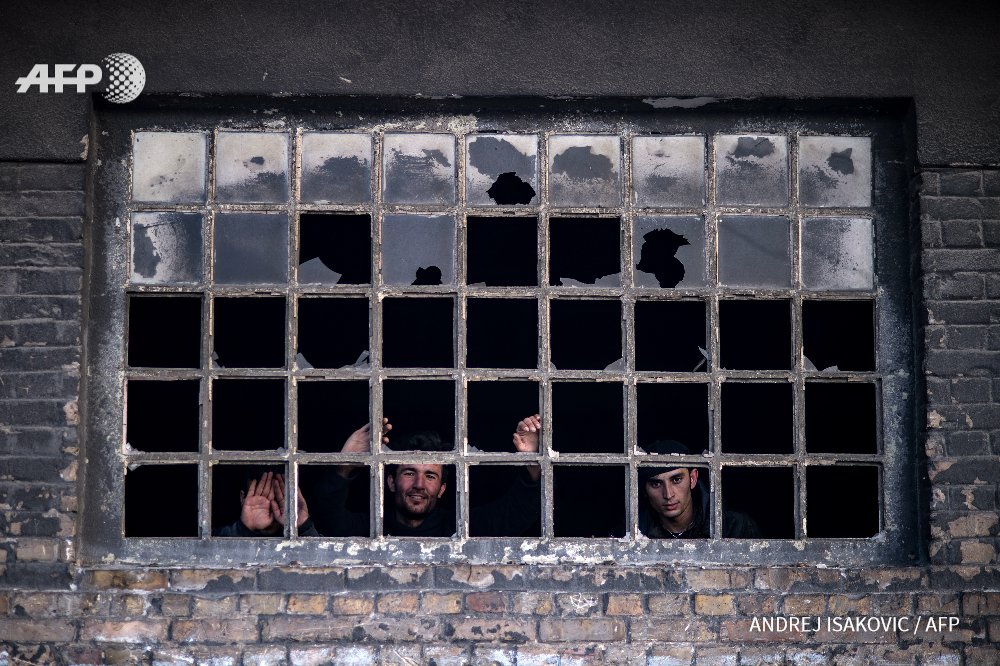
SERBIA - Migrants look out from a window at a makeshift shelter at an abandoned warehouse in Belgrade. By @iandrej #AFP: image via Frédérique Geffard @fgeffardAFP, 15 January 2017
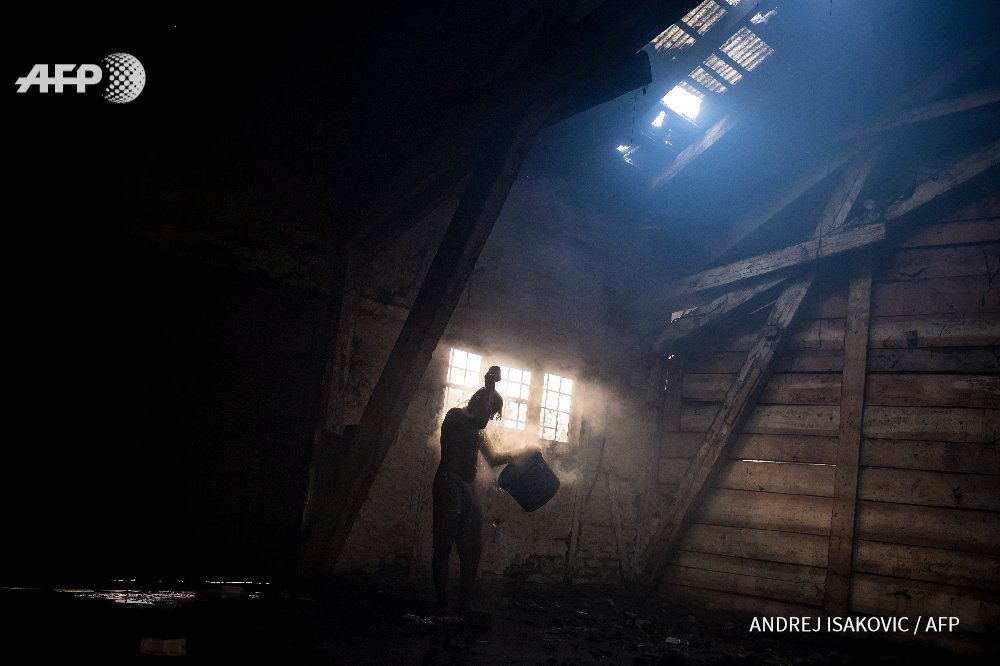
SERBIA - A migrant washes himself inside a derelict warehouse in Belgrade with temperatures just bellow zero Celsius overnight. By @iandrej #AFP: image via Frédérique Geffard @fgeffardAFP, 15 January 2017

Just another day with #migrants in #Belgrade #Refugees #humanity #AFP: image via Andrei Isakovic @iandrej, 15 January 2017
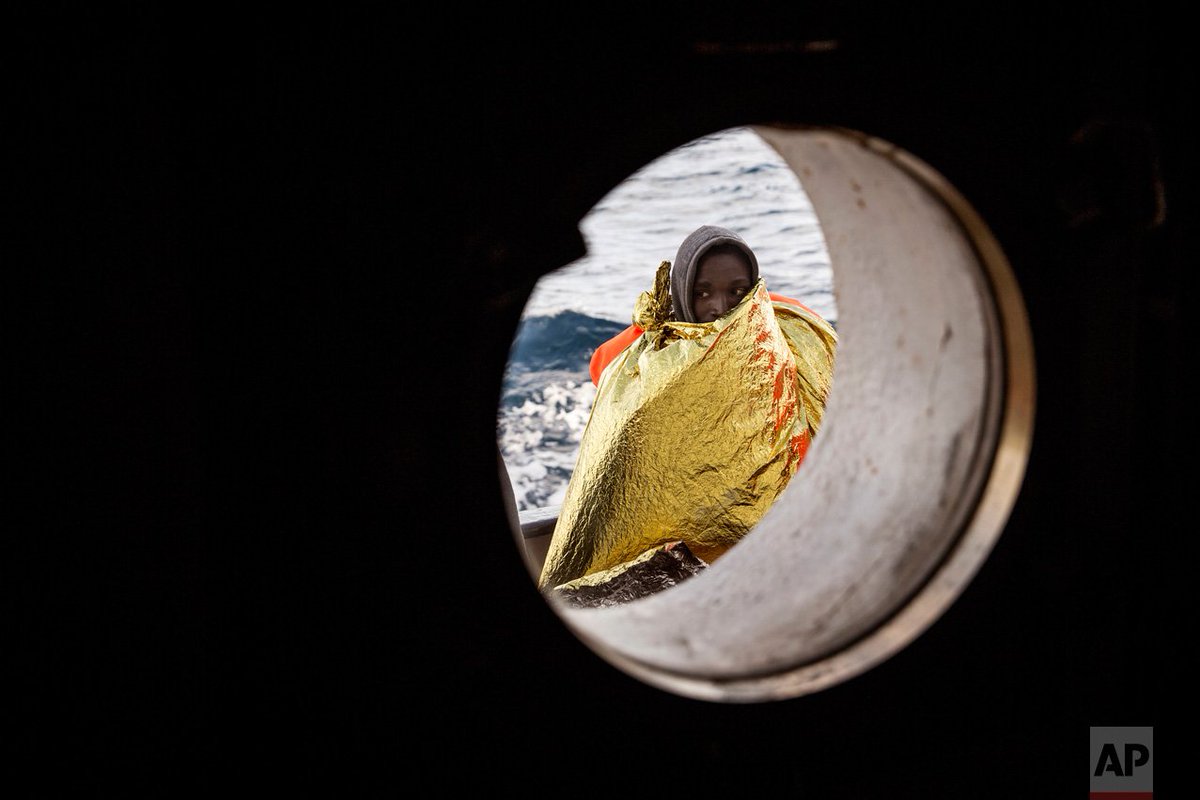
Migrants from #Mali crowd the Golfo Azzurro vessel after being rescued from the Mediterranean Sea. #Photo by @OlmoCalvo: image via AP Images @AP_Images, 15 January 2017
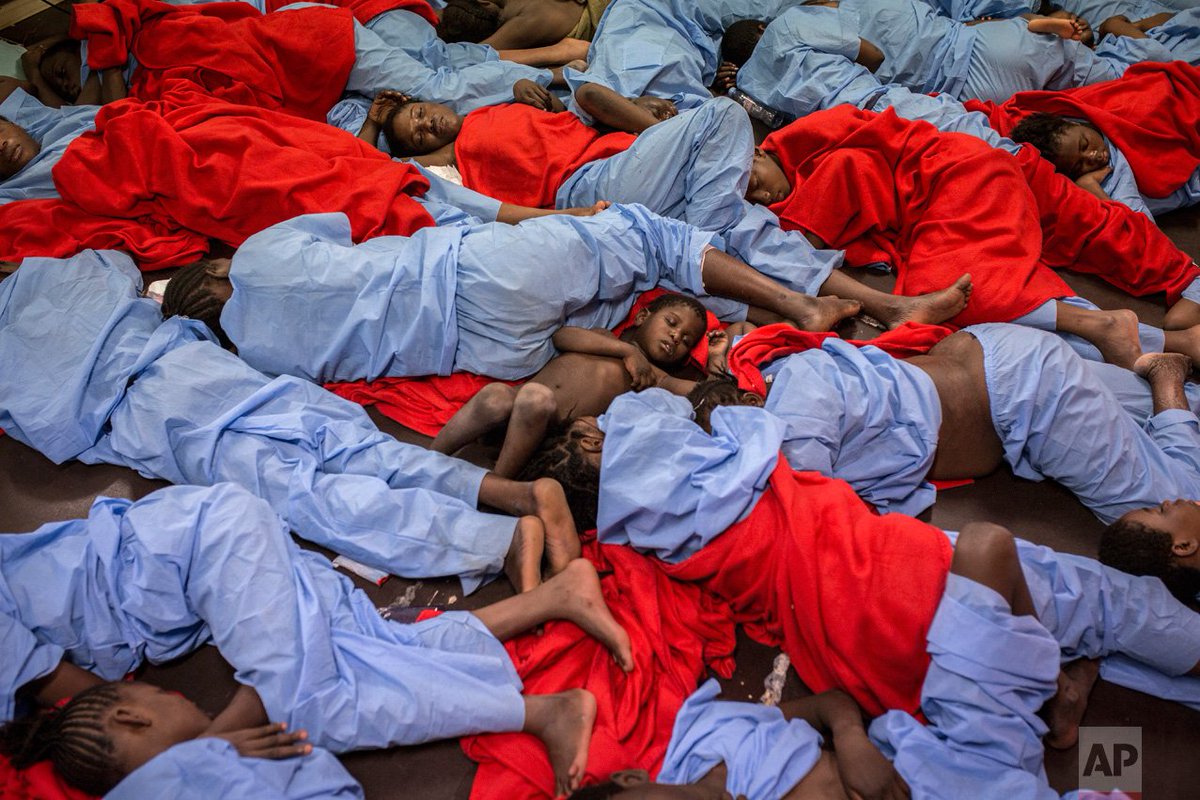
In this Friday Jan. 13, 2017 photo, Idris 3, from Mali, center, sleeps next to his mother Aicha Keita, right, on the deck of the Golfo Azzurro vessel after being rescued from the Mediterranean sea, about 20 miles north of Ra's Tajura, Libya. Spain's maritime rescue service says the bodies of seven African migrants have been found dead along the Strait of Gibraltar since Friday.: photo by Olmo Calvo/AP: image via AP Images @AP_Images, 15 January 2017
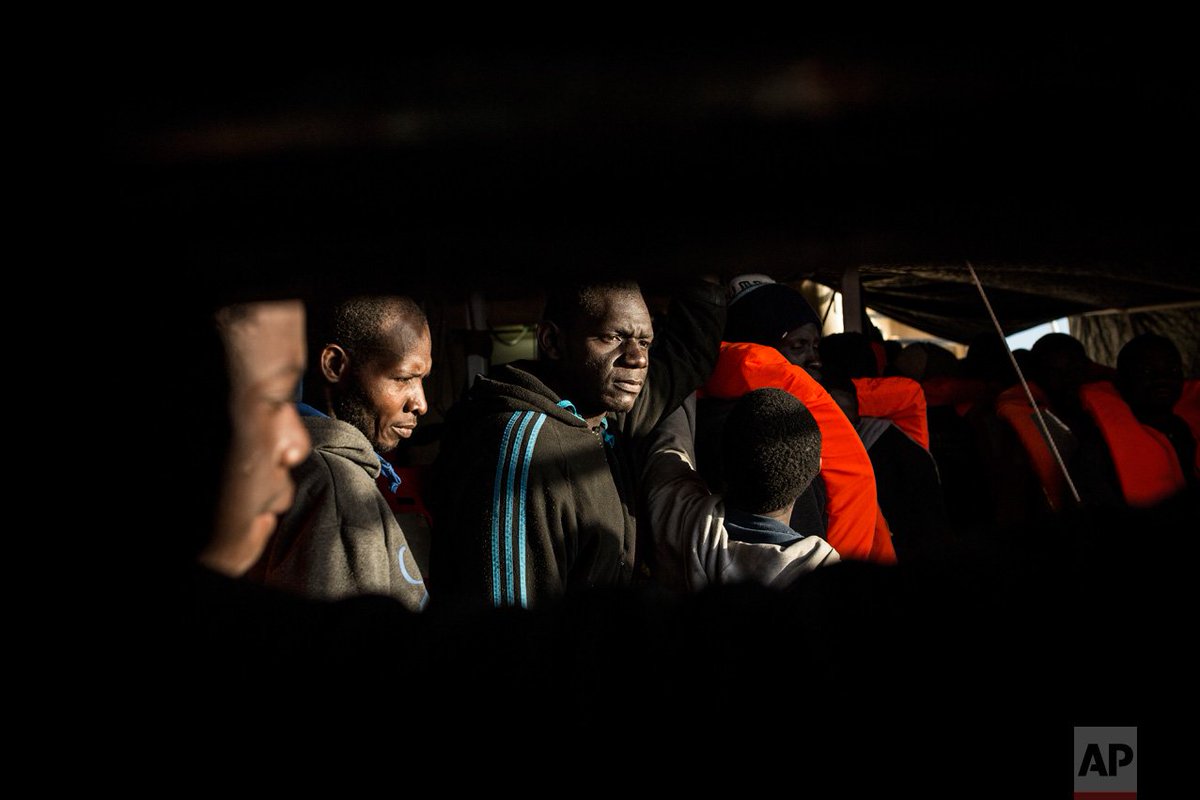
In this Friday Jan. 13, 2017 photo, men from Mali stand on the deck of the Golfo Azzurro vessel after being rescued from the Mediterranean sea, about 20 miles north of Ra's Tajura, Libya. Spain's maritime rescue service says the bodies of seven African migrants have been found dead along the Strait of Gibraltar since Friday.: photo by Olmo Calvo/AP: image via AP Images @AP_Images, 15 January 2017
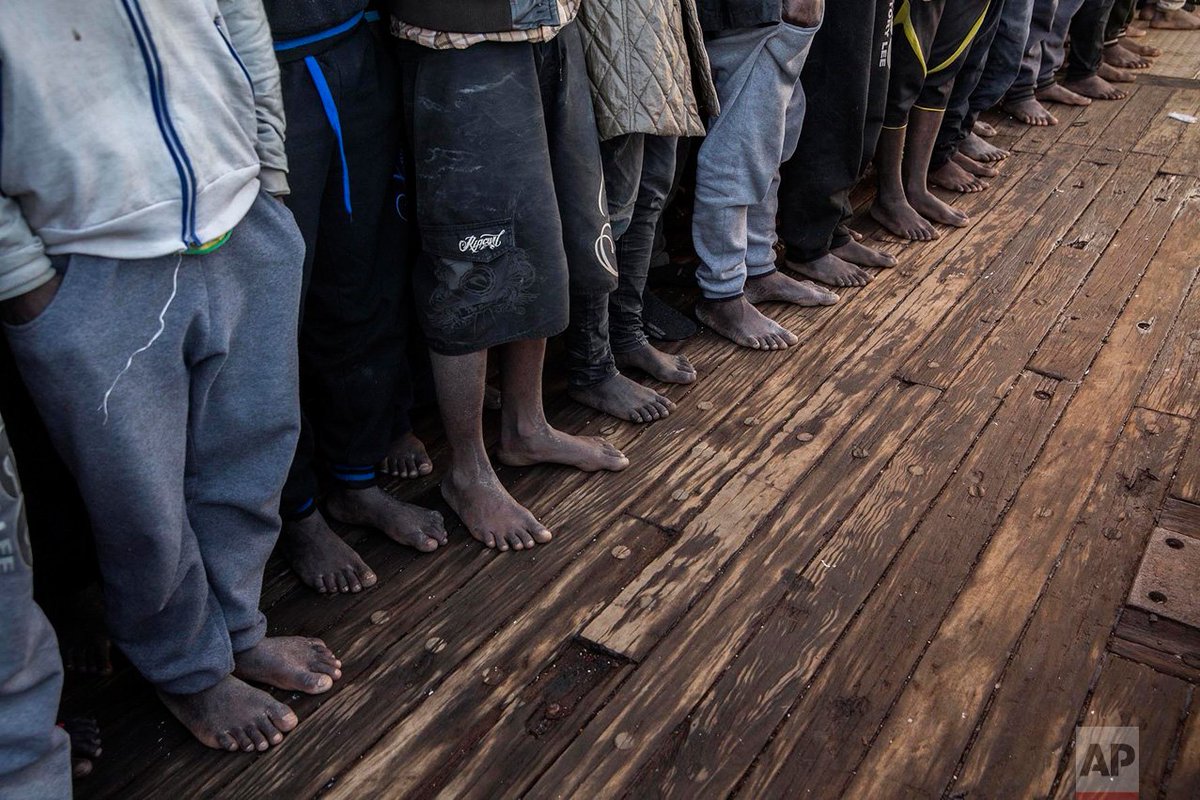
Migrants from #Mali crowd the Golfo Azzurro vessel after being rescued from the Mediterranean Sea. #Photo by @OlmoCalvo: image via AP Images @AP_Images, 15 January 2017
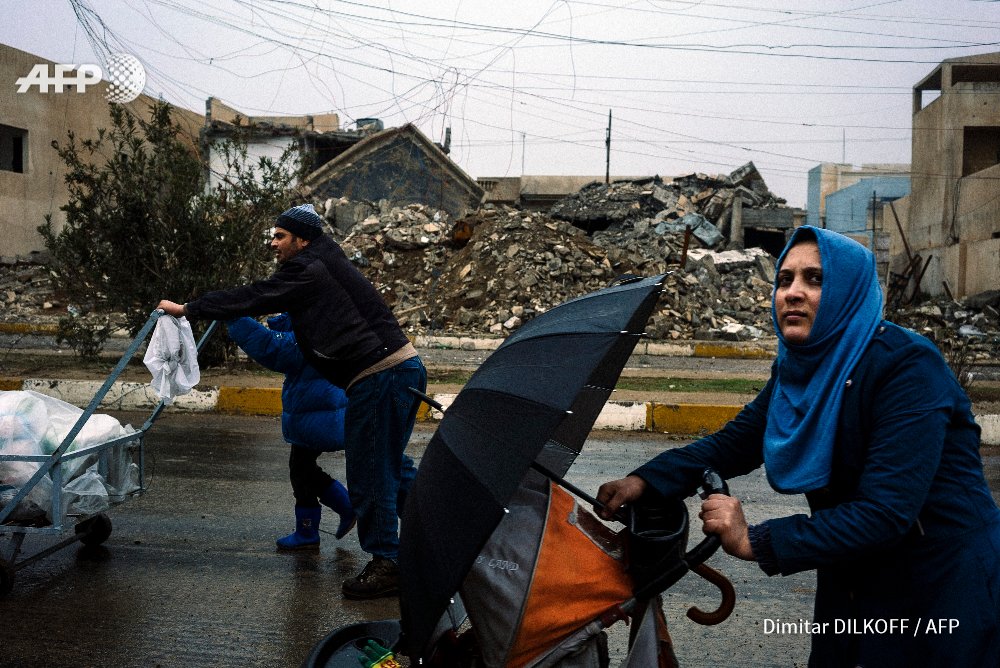
IRAQ - An Iraqi family flee with other civilians during an ongoing military operation against IS in eastern Mosul. By @dilkoff #AFP: image via Frédérique Geffard @fgeffardAFP, 15 January 2017
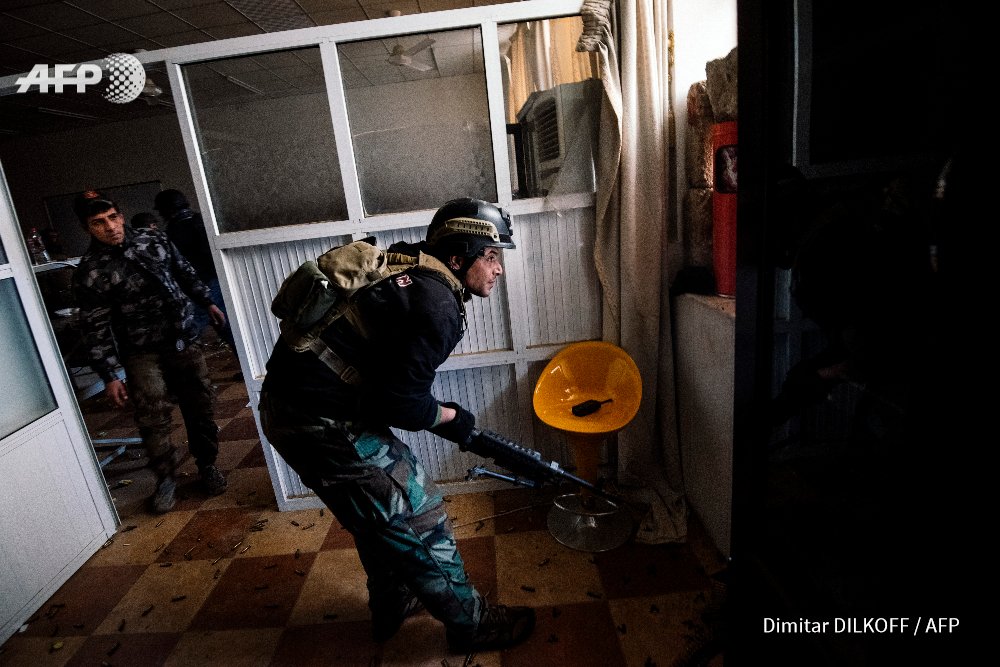
IRAQ -A member of Iraqi special forces' Counter-Terrorism Service monitors IS group positions from inside of Mosul's university. By @dilkoff : image via Frédérique Geffard @fgeffardAFP, 15 January 2017
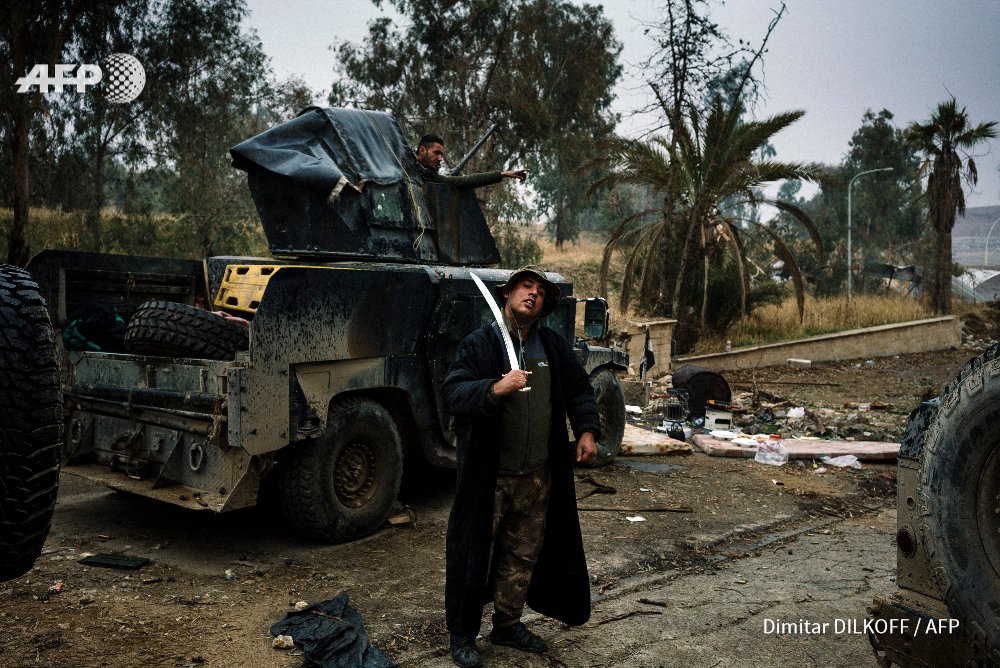
IRAQ -A member of Iraqi special forces' Counter-Terrorism Service holds a sword while guarding a position at Mosul's university. By @dilkoff #AFP: image via Frédérique Geffard @fgeffardAFP, 15 January 2017

Ghouta, #Syria A man riding a bicycle past damaged buildings in the rebel-held besieged city of #Douma. By @BassamKhabieh @reuterspictures: image via photojournalism @photojournalink, 15 January 2017





1 comment:
i missed the real-time televised experience of the jfk inauguration (my father was stationed at NATO's southern headquarters in naples for 1959-1962) but was back in the states for the cuban missile crisis, and the assassination, so my memory of frost's appearance is based on seeing the film, not the event as it happened (unlike lee harvey oswald's murder, which took place while i was watching tv) - how full of historical events my life has been - so far - and as obenzinger's poem points out, here comes another one
obenzinger himself has had an eventful life and sounds like a mensch in his self-description - http://www.columbia1968.com/hilton-obenzinger/
self-description - there's a fraught and problematic phrase, as borges points out - don quixote's problem of reconciling his view of self with his homicidal action is like that of uncle sam coming to terms with his deeds with respect to the original inhabitants, the kidnapped africans, the workers from asia and from the rest of the americas
here's something about how one sees self in relation to world that i read recently:
In The mind illuminated: A complete meditation guide integrating Buddhist wisdom and brain science (2015), Culadasa (John Yates) gives a picture (3 pictures, really – figure 57, pages 411-413) of the changes in worldview he says can be produced by practicing the program of development he delineates. There are a lot of circles and arrows in the illustrations. Here are the captions for the three stages:
p. 411 Three assumptions – that I am a separate Self, that I live in a world of relatively enduring and self-existent “things”, and that my happiness comes from the interactions between my Self and this world of things – are shared throughout the subminds making up the mind-system. They provide the foundation for our sense of meaning and purpose in life.
p. 412 The “true” nature of reality, as revealed through Insight experiences, directly conflicts with all these assumptions: there are no “things”, only process; all we ever really experience are the fabrications of our own minds; the Self I think I am is as impermanent and empty as everything else; the world can never be the source of my happiness. When these truths are realized by the deep unconscious minds, it is severely disruptive.
p. 413 As Insight matures, individual sub-minds reorganize their internal models to accommodate the new information. This transformation brings about a completely new worldview, life takes on a new and deeper meaning and purpose than ever before, and there is a much greater sense of ease, regardless of what may happen.
The thought balloon on page 413 states, “I am not separate. Everything arises and passes away due to causes and conditions. This body and mind are not things, but causal process. Having arisen due to causes and conditions, they are causes and conditions in their turn Ultimate truth is knowable, but not through ideas and concepts. Pain is inevitable, but suffering is optional.”
On January 13, 2017, Culadasa/John Yates tweeted:
"A New Buddhist Path: Enlightenment, Evolution, and Ethics in the Modern World" by David R. Loy. I purchased it after one of his talks. This is an excellent work. Here he clearly explains why the emerging global culture needs the Buddha’s teachings, and why Buddhism needs Western culture and science. With the proper combination of both, humankind may even survive its successes and excesses.
Post a Comment